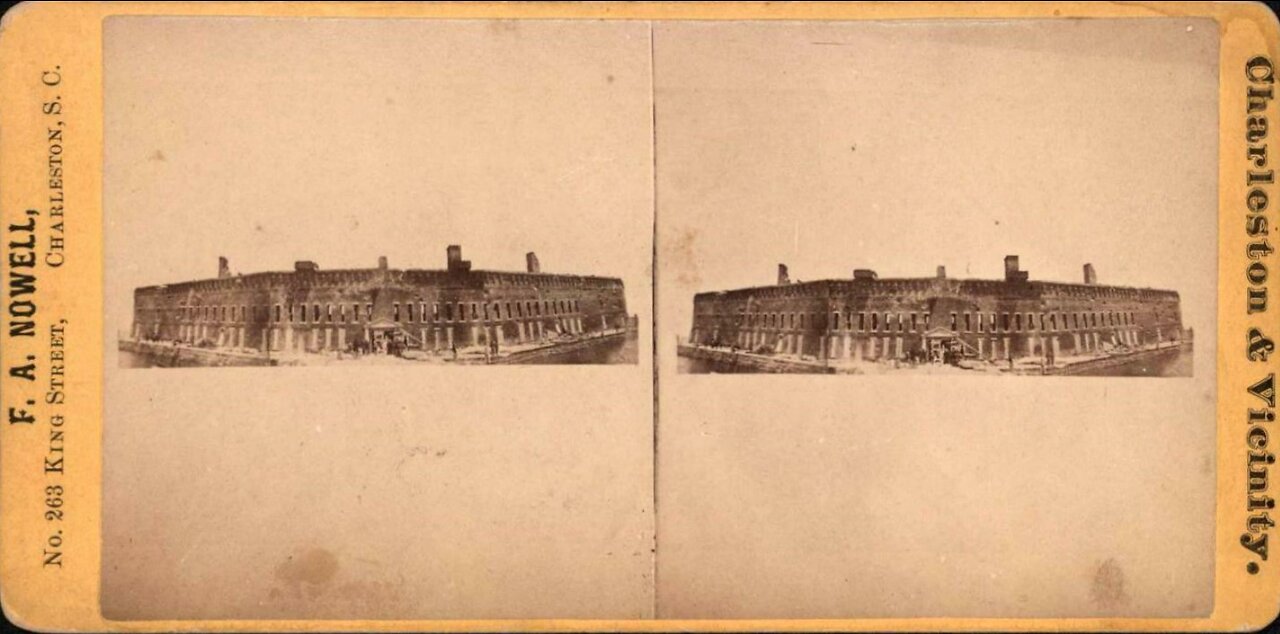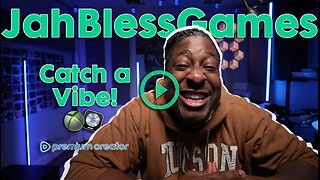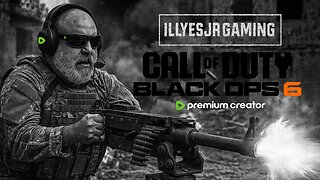Premium Only Content

April 12, 1861: How Honest Abe Forced the South to Fire the First Shot on Fort Sumter, SC
How Lincoln Forced the South to Fire the First Shot
(Brad Benson Archive)
After the initial Articles of Secession were passed by South Carolina, negotiations between South Carolina's Representatives and the US Government in Washington, DC, were occurring on a continuing basis with an eye toward turning over US Assets to the State of South Carolina. However, savvy politician ‘Honest Abe’ had other ideas and he ordered his negotiators to stall.
In the South, although the Confederacy had not yet been formed, negotiations to create a loose association of Confederate States were in progress and this made the port of Charleston extremely important for future trade. As a result, in the months immediately preceding the Civil War, Fort Sumter became a particularly sensitive issue because of its prominent location at the mouth of the South's most important East Coast Port.
South Carolina’s Secessionist Government was also concerned that the fort not be resupplied with munitions and had therefore agreed to provision the troops within the fort, with food and other supplies, until it could be turned over to the new Southern Authorities (as was later done with many forts and armories all over the South). In fact, until very late in the game, Federal Troops remained within the city of Charleston and many continued to date local girls right up until the troops were ordered to withdraw into the fort by their commanders in Washington.
Meanwhile, Lincoln continued to keep the Southern Negotiators at bay as he struggled to find a way to keep the fort. He also knew that any attempt to resupply the fort would be met with Southern Artillery since, only a few months previously, an attempt to resupply the fort had failed after the supply ship, "Star of the West", received a warning shot across her bow.
Lincoln’s preference was to preserve the Union at any cost but, as each day passed, he was losing key Southern States. Realizing that retaining the fort was becoming less probable, he decided upon a ploy by which he could trick the trigger happy secessionists into firing the first shot on the fort and thus also upon the “Grand Old Flag”. He knew that this would be grounds for war, especially if the South Carolinians fired on the National Flag, and that this might very well inspire war fever in an otherwise less than enthusiastic Northern Populace.
Lincoln’s Scheme was both clever and simple. Ostensibly in secret, he ordered that seven battle cruisers then anchored in New York Harbor should be loaded with provisions, but ensured that word was put out on the street that the cruisers were being loaded up to resupply Fort Sumter. At the time, New York was filled with Southern Sympathizers and the rumors were spread far and wide.
Then, with much fanfare, the ships sailed out of the harbor. They sailed southward, well in view of many other Southern Sympathizers along the coasts. This set in motion a time frame in which the South Carolinians had to gain control of the fort prior to the arrival of the cruisers or risk losing it forever, since they had no navy. As a result, General Beauregard was forced to fire on the fort, which was commanded by his old friend and former West Point Mentor, Major Robert Anderson, the U.S. Commander.
As they did throughout the war, most notably at Gettysburg, Confederate Artillery fired high and actually did very little real damage to the fort. No one was killed during the shelling and one crazy Southern Politician actually rowed out to the fort during the barrage in an effort to talk his "friend", Major Anderson, into surrendering the fort before someone actually did get hurt.
The barrage continued for a while longer until such time as Anderson realized that he could not be relieved or resupplied and that therefore further resistance would be unwarranted and possibly stupidly suicidal. He asked for terms and was granted the right to full withdrawal of his men.
The fort was then turned over to the South Carolinian Authorities. The South Carolinian State Flag was hoisted in place of the American Flag in a ceremony in which both Federal Regulars and SC Militia presented arms and fired a cannon salute.
The first casualties of the Civil War occurred during this flag changing ceremony when one of the cannons fired by the Federal Troops as part of the salute blew up--killing two Union Gunners and two mules.
On the next day, Lincoln was able to use the firing on the Grand Old Flag to call for 75,000 Volunteers and that is how he convinced a not so supportive Northern Populace to enter the war.
-
 LIVE
LIVE
SpartakusLIVE
5 hours ago$1,000 Pistol Challenge || #1 ENTERTAINER of The EONS Eradicates BOREDOM
1,453 watching -
 LIVE
LIVE
TimcastIRL
2 hours agoTrump Orders Review of Smithsonian For Being Woke & Out of Control | Timcast IRL
6,797 watching -

Barry Cunningham
5 hours agoPRESIDENT TRUMP HAS TAKEN THE MONSTER AWAY FROM THE LEFT! HORROR STORIES WON'T WORK ANYMORE!
32K29 -
 LIVE
LIVE
WickedVirtue
18 minutes agoLate Night Fortnite w/ Friends
88 watching -
 LIVE
LIVE
This is the Ray Gaming
51 minutes agoCould you be? Would you be? Won't you be my RAYBOR? | Rumble Premium Creator
30 watching -
 LIVE
LIVE
JahBlessGames
1 hour ago🎉Come een' and come tru' - VIBES | MUSIC | GAMES
50 watching -
 38:47
38:47
MattMorseTV
3 hours ago $6.80 earned🔴Tulsi just CLEANED HOUSE.🔴
24.4K39 -
 LIVE
LIVE
Reolock
4 hours agoWoW Classic Hardcore | WE'RE BACK!!
66 watching -
 LIVE
LIVE
SynthTrax & DJ Cheezus Livestreams
6 hours agoShell Shock Live - The Scorched Earth Remake/Upgrade - 4pm PST / 7pm EST - RUMBLE GAMING
130 watching -
 LIVE
LIVE
Illyes Jr Gaming
2 hours agoBack to Black .....Ops 6 w/ ILLYESJRGAMING
53 watching